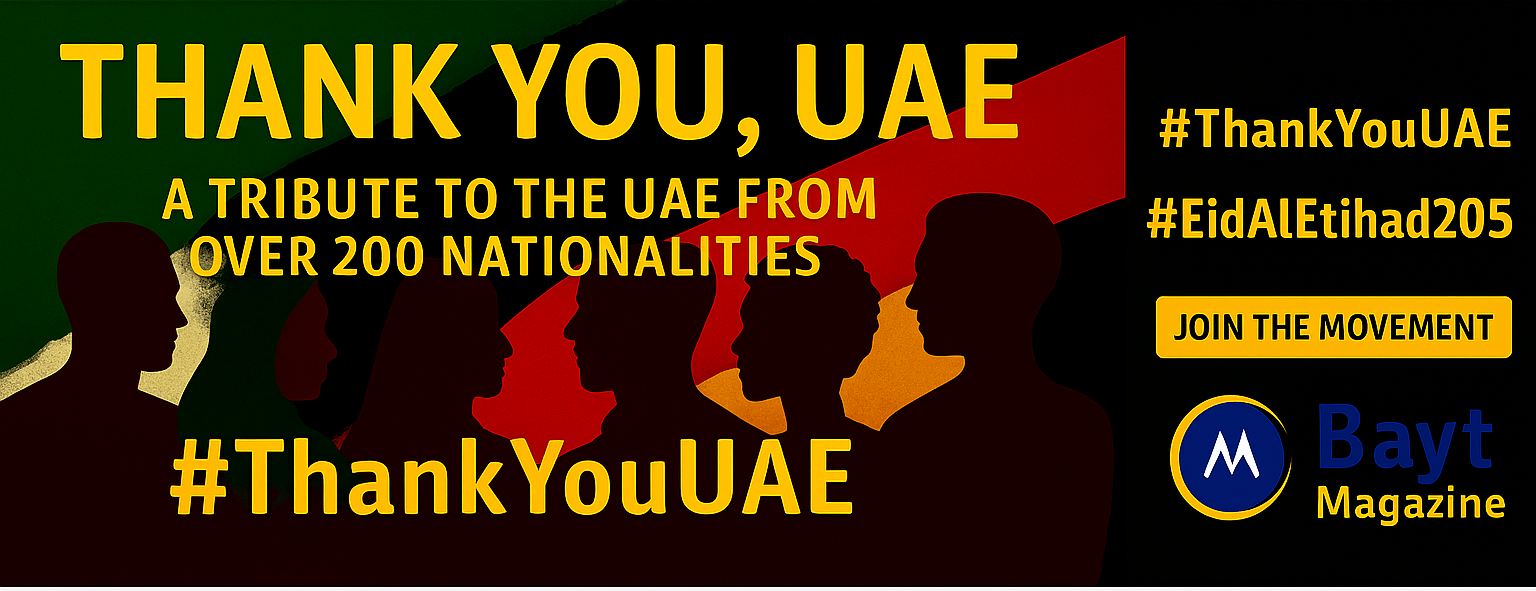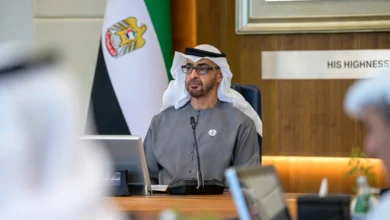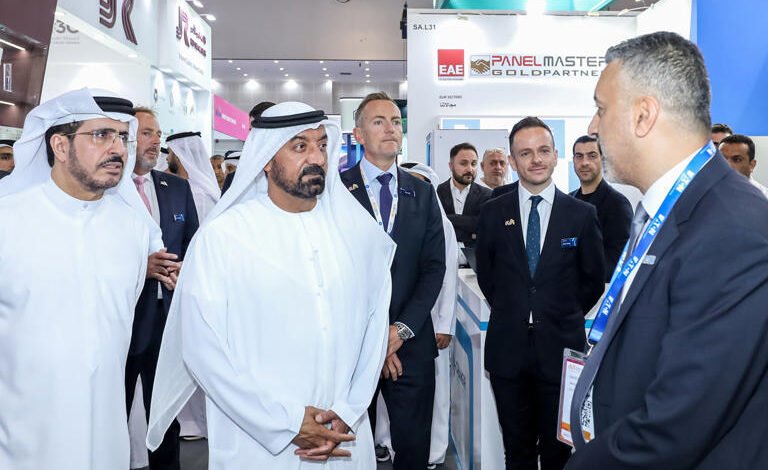
Middle East Energy 2025: Essential Updates That Will Shape the Industry
The Middle East’s energy sector is changing dramatically. The region’s battery market will likely reach $10 billion by 2029. This rise stems from growing electrification needs and rapid urban development that shows the region’s push toward energy progress.
Middle East Energy 2025 proves this change. The event brings together over 40,000 industry professionals and 1,600 exhibitors from more than 90 countries. State-of-the-art technologies span the energy value chain, from renewable energy to smart grids and storage solutions. The Battery Show Middle East debuts alongside six specialized conferences where 150 industry experts will speak. This positions the region perfectly between traditional and renewable energy sources.
This detailed gathering serves as a vital platform to address the Middle East’s energy transition challenges. The focus remains on decarbonization strategies and innovative solutions that will define the region’s energy future.
Groundbreaking Technologies Unveiled at Middle East Energy 2025
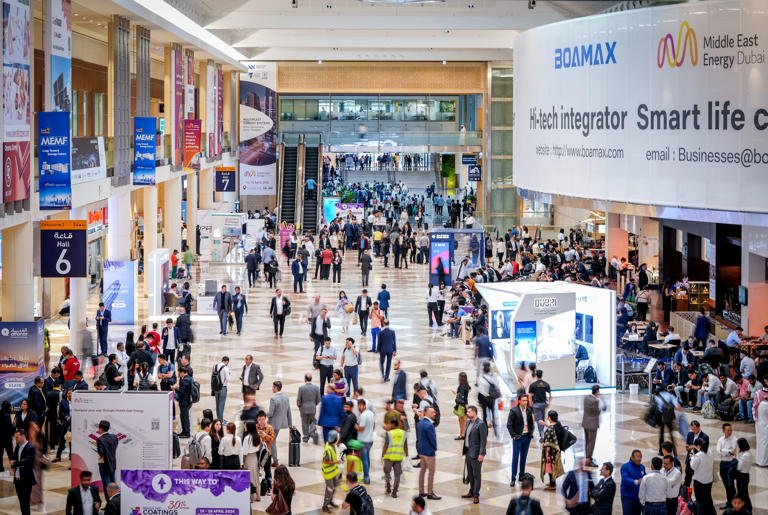
Groundbreaking Technologies Shown at Middle East Energy 2025
Middle East Energy 2025 has become a showcase for innovative technologies that have altered the map of the region’s energy world. The event at Dubai World Trade Center brought remarkable technological advances in energy sectors of all types.
Next-generation solar innovations
AE Solar made a major impact at the event by showing its revolutionary HJT 0BB modules for large-scale solar projects. These modules deliver high efficiency and durability that suit the region’s challenging climate conditions. The company also featured customizable Building Integrated Photovoltaic (BIPV) modules for homes and their Horizon Series modules for carport integrations. This showed their commitment to meet various market needs.
AE Solar’s Dr. Hamed Hanifi talked about the Middle East’s urban infrastructure challenges. He explained how their technologies work best with the region’s unique environmental needs. Their focus on custom solutions marks a key advance in making solar technology more adaptable and efficient for Middle Eastern conditions.
Battery storage breakthroughs
The event’s biggest news was Abu Dhabi’s world-first large-scale ’round the clock’ gigascale project that combines solar power with battery storage. This remarkable facility will use a 5.2GW solar photovoltaic plant paired with a 19 gigawatt-hour battery energy storage system (BESS). This sets a new standard in clean energy innovation.
The project will supply up to 1 gigawatt of baseload power daily from renewable energy. This solves the ongoing intermittency problem that has stymied renewable energy adoption. Such development marks a crucial step toward making renewable energy reliable for continuous power supply.
Smart grid solutions for regional challenges
Smart grid technologies continue to grow in the Middle East. The market could reach 2.6 billion US dollars by 2032. These advanced systems use up-to-the-minute monitoring, predictive maintenance, and demand response mechanisms to optimize energy distribution.
Exhibitors at Middle East Energy 2025 showed how IoT-enabled sensors and AI-driven systems can substantially improve grid efficiency and reduce energy waste. These technologies aid the integration of renewable energy sources while maintaining grid stability. Automated controls have also boosted operational reliability by reducing outages and downtime.
The smart grid solutions at the event address regional issues like aging infrastructure, variable renewable energy integration, and the need for better cybersecurity in energy systems.
Renewable Energy Revolution in the Middle East
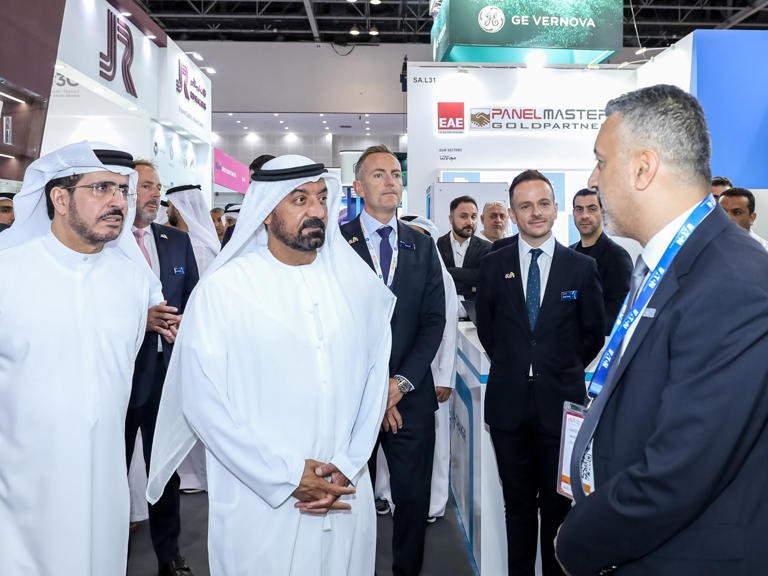
Renewable Energy Revolution in the Middle East
Middle Eastern countries are transforming their energy portfolios with bold renewable targets that accelerate unprecedented growth. This shift is turning economies that once relied on fossil fuels into clean energy leaders.
Solar power dominance and expansion
Middle Eastern nations utilize their abundant solar resources to achieve record-low generation costs. In the UAE, solar power costs just 1.35 cents per kilowatt hour, making it one of the world’s most competitive markets. Saudi Arabia’s Vision 2030 wants to achieve 50% renewable energy by 2030, which needs a massive 130 GW capacity. Dubai’s Mohammed bin Rashid Al Maktoum Solar Park, with its USD 13.6 billion investment, will reach 5 GW by 2030. The region achieved its biggest renewable energy expansion in 2022, adding 3.2 gigawatts of new capacity.
Wind energy developments
Wind energy continues to gain ground in the Middle East. Saudi Arabia’s 400 MW Dumat Al Jandal Wind Farm is the region’s largest, and Jordan has invested in several projects including the 117 MW Al Rajef and Tafila wind farms. The Middle East’s total installed wind capacity reached only 1.05 GW in 2022, which shows huge potential for growth. Egypt leads the region’s wind development with 1.64 GW capacity, mostly in the Gulf of Suez where wind speeds are higher than 10 meters per second.
Green hydrogen initiatives
Middle Eastern countries position themselves as future green hydrogen exporters to meet growing global needs. The region has 67 low-carbon or renewable hydrogen and ammonia projects in development that will produce 9 million mt/year. Saudi Arabia and the UAE lead this movement, with Saudi Arabia targeting 2.9 million tons of hydrogen production each year by 2030. The MENA region could earn USD 130 billion yearly from clean hydrogen exports by 2050, becoming the world’s fourth-largest clean hydrogen producer by 2040.
Digital Transformation of Energy Systems

Image Source: Fast Company Middle East
Digital Transformation of Energy Systems
Digital innovation and energy systems are joining forces to build the Middle East’s sustainable future. Power companies in the region now speed up their digital transformation. They aim to improve efficiency, boost reliability, and support the shift toward a more sustainable energy world.
AI-powered grid management
AI is changing how electricity networks perform in the Middle East through live monitoring, demand forecasting, and automated load balancing. Dubai Electricity and Water Authority (DEWA) leads the region with its Automatic Smart Grid Restoration System (ASGR). This breakthrough system works 24/7 without human input. It spots faults and restores services on its own. The International Energy Agency notes these smart grids “better match the supply and demand of electricity in real-time while minimizing costs and maintaining the stability and reliability of the grid”.
IoT applications in energy efficiency
IoT applications are reshaping energy management in the Middle East in several ways:
- Asset management: Energy companies use IoT sensors to track their assets’ health and performance. This includes power plants and pipelines, which helps prevent breakdowns and reduces expensive downtime.
- Smart metering: IoT-enabled meters show live data about consumption, voltage levels, and usage patterns. This helps utilities forecast demand better.
- Renewable energy optimization: IoT solutions are vital for monitoring and optimizing renewable energy generation. They help predict supply changes.
The region’s IoT energy market will grow 12.36% yearly from 2024 to 2029. Saudi Arabia will lead this growth with about 39.63% of the Middle East’s IoT market.
Cybersecurity for critical energy infrastructure
Cybersecurity has become a top priority as Middle Eastern energy systems grow more connected. IT and OT systems working together improve operations but create new security risks. Middle Eastern governments have responded by creating detailed national cybersecurity frameworks to protect their digital systems.
Saudi Arabia’s National Cybersecurity Authority has launched three key frameworks to boost security for critical infrastructure organizations. Qatar focuses its National Cybersecurity Strategy on protecting vital sectors like energy, finance, and transportation. These frameworks make all sectors more resilient and support broader goals for secure digital economies.
What’s in the Middle East Energy Transition: Key Projects

Image Source: DOB Energy
What’s in the Middle East Energy Transition: Key Projects
The Middle East leads the way in energy transformation with trailblazing projects that reshape the scene and set new standards for clean energy worldwide.
UAE’s Mohammed bin Rashid Solar Park expansion
The Mohammed bin Rashid Al Maktoum Solar Park stands as the world’s largest single-site solar facility using the Independent Power Producer model. The park produces 3,460MW with another 1,200MW under construction. The project aims to reach 5,000MW by 2030 with AED 50 billion ($13.6 billion) in investments. This will cut down carbon emissions by 6.5 million tons each year.
The park grows steadily with six phases either running or under construction. The seventh phase has caught the attention of 47 companies from 17 countries. This new phase will add 1,600MW and include a 1,000MW battery storage system delivering 6,000 megawatt-hours. The completed seventh phase will generate 4.5 terawatt-hours of clean power yearly. This eliminates the need for 36 billion cubic feet of natural gas and cuts carbon emissions by eight million tons annually.
Saudi Arabia’s NEOM hydrogen production facility
NEOM Green Hydrogen Project leads Saudi Arabia’s Vision 2030 with an $8.4 billion investment in clean energy’s future. ACWA Power, Air Products, and NEOM have united to build the world’s largest green hydrogen plant. The project is 60% complete and will start operating in December 2026.
The facility in NEOM’s Oxagon region will make use of 4GW solar and wind energy to produce 600 tons of carbon-free hydrogen daily. The hydrogen converts to green ammonia for easier worldwide shipping. The project secured $6.1 billion from 23 financial institutions and has a 30-year agreement with Air Products. The facility will stop five million tons of carbon dioxide from entering the atmosphere each year.
Qatar’s smart city energy management systems
Qatar Foundation turned its 12-square-kilometer Education City campus into a smart city model through smart energy systems. The team combined data from 45 facilities that once ran on different control systems by using AVEVA Operations Control.
A central command center now watches all systems closely. This helps teams find cooling energy waste and respond faster to equipment problems. The digital upgrade brought clear benefits – less water use and a 5.5% drop in energy consumption. Qatar extends these smart city ideas beyond Education City. Lusail City now runs on an AI-powered platform that smoothly combines asset management with AI-enhanced workflow automation.
Middle East Energy 2025 shows how the region is making a radical alteration toward green practices. Middle Eastern nations are moving from traditional energy exports to clean energy leadership. Their investments in solar power, wind energy, and green hydrogen production are driving this change.
Smart grid technologies and AI-powered management systems are the foundations for this rise in energy capabilities. The Mohammed bin Rashid Solar Park and NEOM’s hydrogen facility showcase the region’s innovative spirit. These projects have established the Middle East as a global leader in renewable energy innovation.
The region’s battery market will reach $10 billion by 2029, which shows its dedication to energy storage solutions. Complete cybersecurity frameworks and digital transformation projects support this remarkable progress. The Middle East continues to lead the path toward a sustainable energy future effectively.


